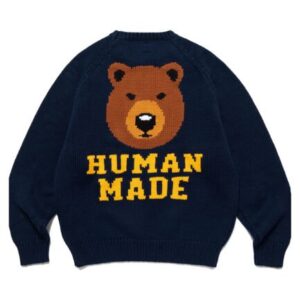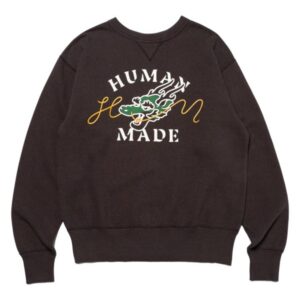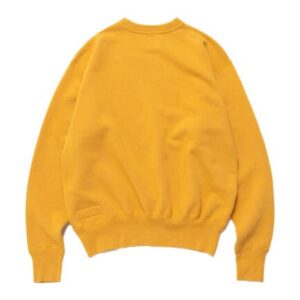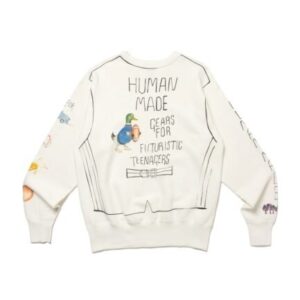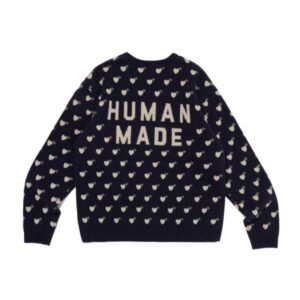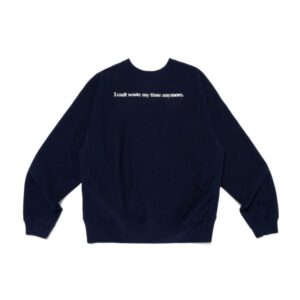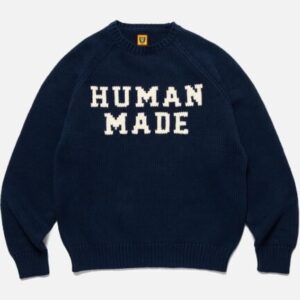
Human Made Bear Raglan Knit Sweater Blue
Original price was: $220.00.$150.00Current price is: $150.00.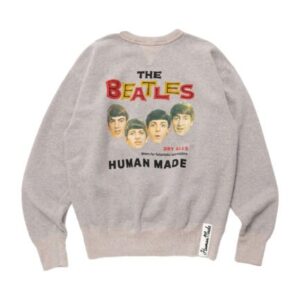
Human Made Beatles Sweatshirt Grey
Original price was: $220.00.$150.00Current price is: $150.00.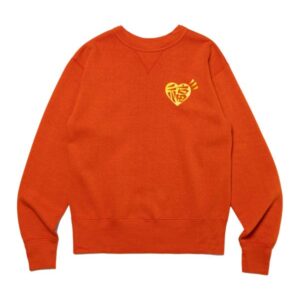
Human Made Dragon Blue Sweatshirt
Original price was: $220.00.$150.00Current price is: $150.00.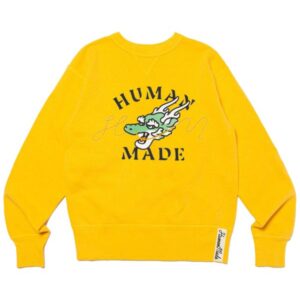
Human Made Dragon Sweatshirt
Original price was: $220.00.$150.00Current price is: $150.00.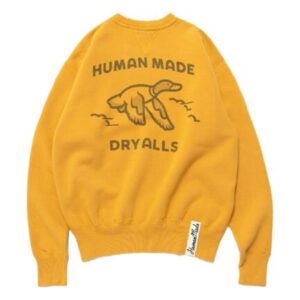
Human Made Duck Tsuriami Sweatshirt Yellow
Original price was: $220.00.$150.00Current price is: $150.00.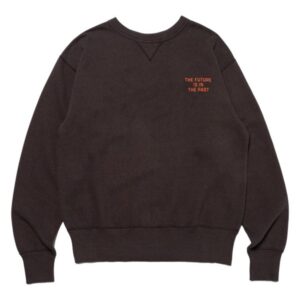
Human Made Graphic Sweatshirt
Original price was: $220.00.$150.00Current price is: $150.00.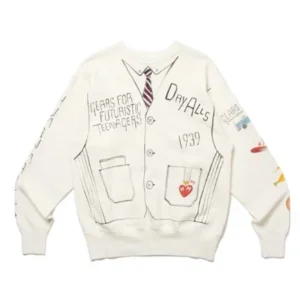
Human Made Graphic Sweatshirt White
Original price was: $220.00.$150.00Current price is: $150.00.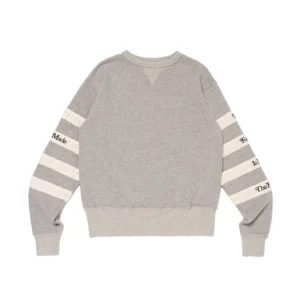
Human Made Gray Long Sleeve Sweatshirt
Original price was: $265.00.$180.00Current price is: $180.00.
Human Made Heart Knit Sweatshirt
Original price was: $220.00.$150.00Current price is: $150.00.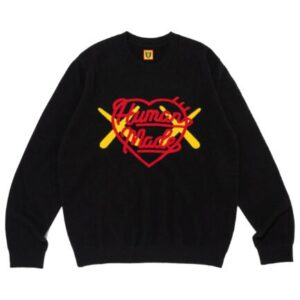
Human Made Heavy Weight Black Sweatshirt
Original price was: $220.00.$150.00Current price is: $150.00.
Human Made Heavy Weight Sweatshirt
Original price was: $220.00.$150.00Current price is: $150.00.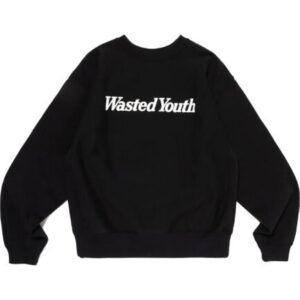
Human Made Heavy Weight Sweatshirt Black
Original price was: $220.00.$150.00Current price is: $150.00.Human-Made Sweatshirts:
Human-made sweatshirts stand out as a sign of comfort and sustainability in the ever-evolving world of modern fashion. Demand for apparel that not only looks nice but also adheres to ethical principles has increased as more people become ecologically conscious. Human-Made Sweatshirts made by humans are an elegant and environmentally friendly option since they are made from cutting-edge materials and produced using ethical methods. The several facets of sweatshirts manufactured by humans are explored in this article, along with information about their composition, advantages, styles, maintenance guidelines, and potential trends.
The Evolution of Sweatshirts:
Originally created for laborers and athletes who needed sturdy, comfortable gear for vigorous activity, sweatshirts date back to the 1920s. Traditionally composed of thick, soft materials like fleece or cotton, the first sweatshirts offered flexibility and warmth. Due to their comfort and adaptability, they were soon accepted by a diverse range of customers and acquired appeal within the sports community before becoming conventional fashion items.
Sweatshirts went from being solely athletic clothing to becoming a fashion standard as attitudes toward casual wear changed in society in the latter half of the 20th century. Sweatshirts have become increasingly ingrained in modern wardrobes thanks to the advent of athleisure, a style that blurs the distinction between exercise and regular apparel. In contemporary times, they are perceived not only as practical apparel but also as a medium for individual expression and flair.
The Shift Toward Human-Made Materials:
Sweatshirt and other apparel fabrics have seen a dramatic change as a result of the global dialogue surrounding ethical and sustainable manufacture. The usage of man-made materials in products is becoming increasingly important for many firms as environmental concerns develop. These fabrics, which are frequently made from sustainable or recycled resources, are meant to lessen the environmental impact of the garment industry.
In order to make sweatshirts that are fashionable, cozy, and ecologically friendly, brands are spending more money on research and development. This change demonstrates the fashion industry's dedication to sustainability and innovation in addition to reflecting shifting consumer tastes.
Understanding Human-Made Fabrics:
Recycled polyester:
Recycled Polyesteror (rPET):
Recycled polyestar rPET is a material that is widely used to make sweatshirts by humans. It is created from used plastic bottles. The carbon impact of producing textiles is greatly reduced by this procedure, which also eliminates the requirement for virgin polyester. The resilience and moisture-wicking qualities of rPET sweatshirts are among their numerous advantageous attributes.
Organic Cotton: Grown with natural ways, organic cotton is not treated with dangerous chemicals or pesticides like conventional cotton is. For customers that value environmental effect, this makes it a more sustainable option. Sweatshirts made of organic cotton are perfect for sensitive skin since they are supple, breathable, and frequently hypoallergenic.
Bamboo Fabric:
Bamboo is a fast-growing, low-water, pesticide-free, and environmentally friendly material. Bamboo fabric naturally wicks away moisture, making it exceptionally comfortable and breathable for sweatshirts. Bamboo is also biodegradable, which makes it a great material for sustainable fashion.
Tencel (Lyocell):
Made from wood pulp that is supplied sustainably, Tencel is a biodegradable fabric that has less of an impact on the environment than other materials. Tencel is a great material for cozy sweatshirts because of its superb breathability and opulent, silky texture.
Hemp Fabric:
Another environmentally friendly material that doesn't require pesticides or a lot of water is hemp. Sweatshirts made of hemp are airy, long-lasting, and get softer with every wash. Hemp is an environmentally friendly crop because it improves the soil in addition.
Advantages of Human-Made Fabrics:
Durability:
Because synthetic fibers are frequently stronger than natural ones, sweatshirts created by humans can withstand normal wear and tear. Because of its resilience, the clothing lasts longer and requires fewer replacements.
Moisture Management:
To keep the wearer comfortable while engaging in physical activity, a lot of materials manufactured by humans are designed to wick moisture away from the body. Those that participate in outdoor sports or fitness activities may find this feature especially helpful.
Simple Maintenance:
Sweatshirts composed of synthetic or blended materials can usually be quickly dried and machine washed, making them ideal for daily use. Their durability against wrinkling and shrinking further enhances their usefulness.
Flexibility in Design:
Designers can use human-made materials to create more creative patterns, hues, and designs. Brands can stay current with fashion because to this flexibility.
Benefits of Choosing Human-Made Sweatshirts:
The lower environmental impact of sweatshirts manufactured by humans is one of the strongest arguments in favor of buying them. Brands can lessen the amount of waste that ends up in landfills and the carbon emissions that come with producing textiles by using recycled materials. This change supports sustainability by encouraging the circular economy, which reuses resources rather than discarding them.
Utilizing sustainable and organic materials also encourages biodiversity and lessens dependency on dangerous chemicals. Customers may greatly contribute to the development of a more sustainable fashion sector by endorsing brands that value products made of human materials.
Comfort and Versatility:
Comfort is a priority in the design of sweatshirts created by humans. Many are ideal for both active and leisure use, with features like elastic cuffs, adjustable hoods, and plush linings. They can be worn for a variety of occasions, from comfortable nights in to informal outings.
Sweatshirts are more attractive when worn layered over other garments like dresses, long sleeve shirts, and t-shirts. Sweatshirts may look great for both an evening out and a workout with the appropriate styling.helping to develop a more environmentally friendly fashion sector.
Fashion Forward:
The need for fashionable and environmentally friendly products is growing along with the fashion industry. A vast range of patterns, hues, and fits are offered by human-made sweatshirts, satisfying a variety of fashion tastes. In order to produce distinctive collections that emphasize sustainability without losing style, several manufacturers work with designers.
These partnerships frequently produce limited-edition items that capture the attention of buyers who appreciate ethics and aesthetics while standing out in a sea of quick fashion. Sweatshirts are now appropriate for a range of events thanks to their distinctive designs, striking motifs, and fitted shapes.
Cost-Effectiveness:
Although sweatshirts created by hand may cost more up front than fast fashion options, their durability usually saves money over time. Purchasing high-quality, ethically produced apparel might eventually result in a more affordable wardrobe because these items typically hold their form and appearance longer.
It's also easy for customers to purchase ethical clothes without going over budget because a lot of manufacturers are now providing reasonably priced sustainable solutions.
Popular Styles of Human-Made Sweatshirts:
A timeless addition to any collection are crewneck sweaters. They look great both on their own and layered over shirts thanks to their straightforward, adaptable style. These sweaters, which come in an assortment of hues and patterns, are ideal for leisurely walks or relaxing at home. Many people choose them because of their simplicity, which offers countless style alternatives.
Hooded Sweatshirts (Hoodies):
Hooded sweatshirts, also referred to as hoodies, are a popular choice since they are comfortable and stylish. Hoodies are convenient and warm since they have a hood and frequently a front pocket. They are appropriate for a variety of events, including social parties and errand runs, since they may be dressed up or down.
With so many manufacturers offering customisable alternatives, hoodies are also a creative canvas that let customers express their individuality with distinctive patterns and hues.
Oversized Sweatshirts:
Due to their comfortable and relaxed fit, oversized sweatshirts have become increasingly fashionable. These sweatshirts give off a carefree, breezy vibe because they frequently have dropped shoulders and longer lengths. To create a stylish look, pair them with skinny jeans or leggings. The large trend allows for individual style expression while emphasizing comfort.
Crop Sweatshirts:
With their contemporary take on the classic silhouette, crop sweatshirts have become a fashionable choice. Their shorter cut makes them look stylish and young when worn with skirts or high-waisted jeans. Trend-conscious shoppers love crop sweatshirts because they can be layered well and are frequently seen in eye-catching hues and designs.
Performance Sweatshirts:
Performance sweatshirts are comprised of materials that wick away moisture and breathe well, making them ideal for active lives. Technical touches like zipped pockets for ease of use or luminous accents for visibility during outdoor activities are frequently included to these sweatshirts. They combine design and utility, making them perfect for outdoor activities, fitness, and everyday use.
Graphic Sweatshirts:
For people who want to stand out, graphic sweatshirts are a popular. These sweatshirts let people show off their individuality and passions with their eye-catching prints, logos, and creative designs. Their distinctive designs demonstrate their personality and make them famous in the streetwear scene. They also frequently spark conversations.
Care and Maintenance of Human-Made Sweatshirts:
It's critical to adhere to precise washing guidelines in order to preserve the longevity of sweatshirts manufactured by hand. While most can be machine washed, it's best to use cold water and a moderate cycle to preserve the integrity of the fabric. Steer clear of bleach as it can fade and harm synthetic fabrics.
Advice for Drying:
For sweatshirts to keep their elasticity and shape, air drying is advised. Choose a low heat setting on the dryer if you plan to use one to avoid shrinking or damaging the cloth. Make sure your clothes aren't left in the dryer for too long by checking their level of dryness on a regular basis. Over-drying can cause synthetic fibers to break down.
Storage:
Sweatshirts need to be kept dry and cool while not in use. Instead of hanging them, folding them will assist keep their shape and stop them from expanding. Try to use breathable garment bags to shield them from dust and pests, and avoid keeping them in direct sunlight to prevent fading. Sweatshirts can last longer and retain its aesthetic if they are kept neatly folded and preserved.
The Future of Human-Made Sweatshirts:
Since sustainable fabrics and production techniques are constantly being developed, the future of sweatshirts manufactured by humans appears bright. In an effort to further reduce their influence on the environment, brands are increasingly investigating bio-based products made from renewable resources. Sweatshirts with increased performance features, such better moisture management, odor resistance, and even self-cleaning qualities, may result from advancements in textile technology.
Consumer Education and Awareness:
The need for sustainable products is expected to increase as customers get greater awareness of how fashion affects the environment. Eco-aware consumers will gravitate toward brands that value ethical production methods and transparency. By extending the lifespan of clothing through proper maintenance, education on sustainable consumption can be furthered. Campaigns to raise awareness about the value of ethical fashion can also affect the tastes and behavior of consumers.
The Role of Circular Fashion:
The future of sweatshirts manufactured by humans is likely to be heavily influenced by circular fashion. Take-back schemes are being introduced by many brands, enabling customers to return used sweatshirts for recycling or refurbishment. This method not only minimizes waste but also cultivates a long-lasting bond between customers and apparel, promoting conscientious buying.
Additionally, brands are investigating recycling and upcycling programs to transform used clothing into new items. In addition to reducing textile waste, this approach promotes design innovation and creativity.
Embracing Technology in Production:
Sweatshirt manufacturing is changing as a result of technological breakthroughs. Production may now be done more effectively and with less waste because to innovations like digital printing, 3D knitting, and automated manufacturing procedures. These technologies give brands the option to design personalized products that satisfy consumer preferences without sacrificing sustainability.
Additionally, firms can optimize their production processes by decreasing excess inventory and overproduction—two significant factors contributing to environmental degradation—through the use of data analytics and supply chain management technologies.


